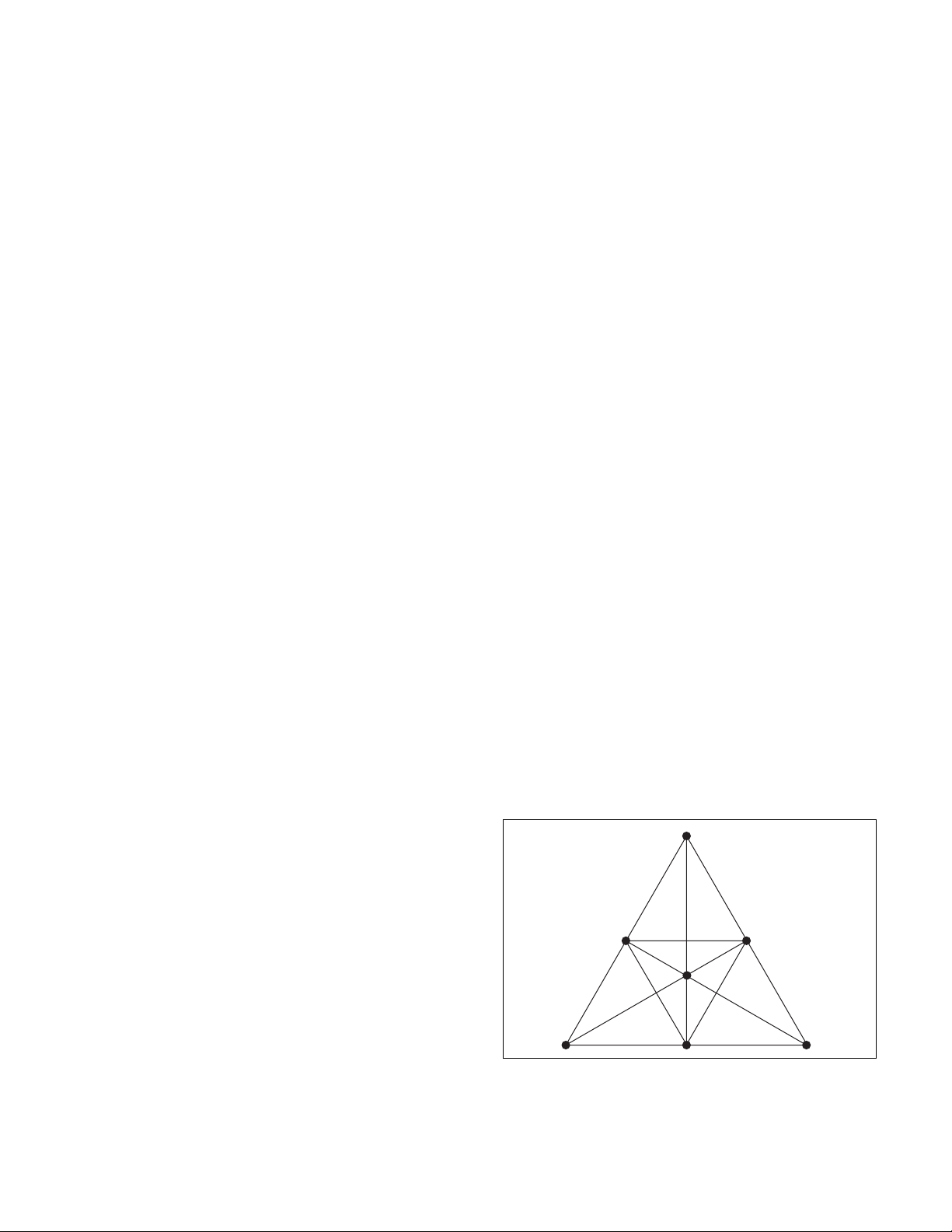
b· (a– xb) = 0
Solving for xgives the formula for the projected vector:
Projection of aonto b= b
See also M
ERCATOR
’
S PROJECTION
;
STEREOGRAPHIC
PROJECTION
.
projective geometry The branch of
GEOMETRY
that examines those properties of geometric figures
that remain unchanged by a central
PROJECTION
is
called projective geometry. Informally, the shadows
cast by a point source of light, such as the flame of a
candle or the small bulb of a flashlight, are central
projections, and so projective geometry examines
those properties that are the same for the shadow of
a geometric object and the object itself. For instance,
the “shadow” of a straight line is another straight
line, and so the notion of “straight” is a valid concept
in projective geometry.
French mathematician and engineer G
IRARD
D
ESARGUES
(1591–1661), through his studies of
PER
-
SPECTIVE
in art, was struck by the fact that the image of
a
CONIC SECTION
under projection is another conic sec-
tion. (For instance, the outline of the circular rim of a
flashlight, a conic section, aimed at the ground at an
appropriate angle produces the image of either an
ELLIPSE
, a
PARABOLA
, or a branch of a
HYPERBOLA
.) His
study of this phenomenon founded the field of projec-
tive geometry. Unfortunately, his work was misunder-
stood at the time and was neglected. The subject was
later revived in 1822 by French mathematician Jean
Victor Poncelet (1788–1867) with his publication of
Traité des proprietés des figures (Treatise on the projec-
tive property of figures).
D
ESARGUES
’
S THEOREM
is a fundamental result
about perspective. In order to unify special cases of the
theorem and to allow for the possibility of two lines
being parallel in its statement, Desargues developed the
notion of “points at infinity” so that one could appro-
priately speak of the point of any intersection of any
two lines in the plane. (Parallel lines are said to inter-
sect at these points at infinity.) In this framework, any
two points in the plane determine a line, and any two
lines determine a point. Thus Desargues had created a
notion of geometry in which the words point and line
play dual roles, and can be interchanged in any true
statement about this geometry to obtain new (true)
statements in this geometry. This notion of duality was
first properly outlined by Poncelet.
Today, any system of objects, usually called points
and lines, satisfying the following five axioms is called
a projective geometry:
1. For any two distinct points, there is exactly one line
containing them both.
2. For any two distinct lines, there is exactly one point
common to both.
3. There is at least one line.
4. Each line contains at least three points.
5. Not all points lie on the same line.
(The last three axioms ensure that the geometry is not
trivial.)
A finite projective geometry is any arrangement of
a finite number of points and lines that obey these five
axioms. For instance, the diagram below, called the
Fano plane, is a projective geometry with seven points
and seven lines with exactly three points on each line
and three lines through each point. (The central trian-
gle is considered a single line.) This is called the sym-
metric configuration of type 73.
There is only one symmetric configuration of type
83, three of type 93, 10 of type 103, and 31 of type 113.
All the symmetric configurations up to type 183have
been determined.
See also
HISTORY OF GEOMETRY
(essay).
a · b
––
|b|2
projective geometry 419
The symmetric configuration of type 73